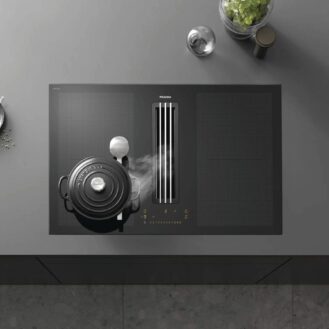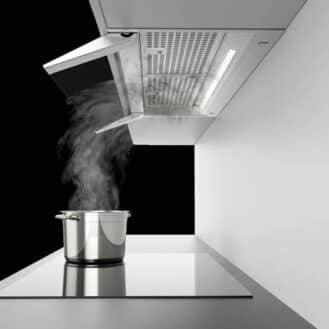Washbasin taps are essential fittings that can change the look and functionality of your bathroom. There are now washbasin taps that conserve water and energy which can be beneficial for your home and the environment.

Washbasin taps are essential fittings that can change the look and functionality of your bathroom. There are now washbasin taps that conserve water and energy which can be beneficial for your home and the environment.
There are specifications to consider when choosing a washbasin tap. We’ve put together a six-point guide to help you throughout the process.
Mixer taps combine hot and cold water, mixing the two together before the water pours out of a single spout. They are either single-handle mixer taps or double-handle mixer taps.
Taps can be more economical if they are fitted with a flow limiter that helps prevent too much water flowing from both hot and cold pipes so you use less hot water when mixing in one single flow, which can help you save a lot on your energy bills and contribute to the environment.
The base and finish material you choose will depend on the style you prefer and what fits with your bathroom environment. The various types of materials for washbasin taps include metal and glass. The most common material for washbasin taps is metal; a lot of metal taps on both the home and commercial market are plated in chrome. Chromed metal is very durable and can last a long time. Other taps made in metal can also have a nickel, gold, or brushed steel finish. Taps made in glass can add a modern and clean look to your space, but they can be more easily damaged than metal taps.
Standard taps, or mechanical taps, are the most popular type on the market, as they can easily be bought and installed. There are also thermostatic taps that use a thermostat to keep the water temperature constant. These can cost more than a standard tap, but many families with children at home prefer them in order to avoid scalding accidents.
Another type is the electronic tap which is equipped with a proximity sensor that allows water to flow in response to hand movement in proximity. Self-closing taps shut off the water automatically after a number of seconds, saving water. Electronic and self-closing taps are often used in commercial places with a lot of users such as airports and malls. Knee and pedal operated taps ensure hands-free operation, which helps prevent cross contamination, making them well suited to healthcare facilites and public buildings.
When choosing the tap it is important to consider if the type of installation is possible with the existing plumbing and washroom fittings.
The main types of washbasin tap installations are wall mounted, countertop (also known as deck-mounted) and floor mounted.
The simplest installation is a countertop tap, which is installed on a countertop with drilled holes or a washbasin with precast holes. Wall mounted taps free up worktop and washbasin space, and can also be positioned more freely than countertop taps. However, they require the water supply to be installed in the wall or behind ducting panels, increasing the installation cost.
Floor mounted taps can add an original and minimalist appearance and are often paired with free standing washbasins. However, floor mounted taps often require floor integrated piping, which can be more expensive and complicated to install.
The number of holes required will depend on the tap configuration you choose. For example, a single-handle mixer tap with an integrated spout will only require one hole. A double-handle mixer tap with a seperate hot water handle, cold water handle and spout will need three holes.
Some of the other characteristics that you might want to consider for your tap include a tap that is eco-sustainable and has water and energy saving features. As mentioned above, there are knee or pedal operated washbasin taps and electronic taps with sensors for hands-free operation.
There are also taps that have integrated lighting and LED displays, mostly found in smart bathrooms in homes and hotels. There are stylish waterfall taps that are designed to have water cascading from a single open spout.
Being mindful of the water flow from your washbasin tap will help you save water. Proper care should be taken to prevent leaking from washbasin taps by fixing leaks as soon as possible and not leaving washbasin taps on when not in use.
Below are more ways you can save water and energy with your washbasin tap:
Modern technological developments have led to the creation of washbasin taps with sensors for hands-free activation, for example. Here are some of the latest trends:


